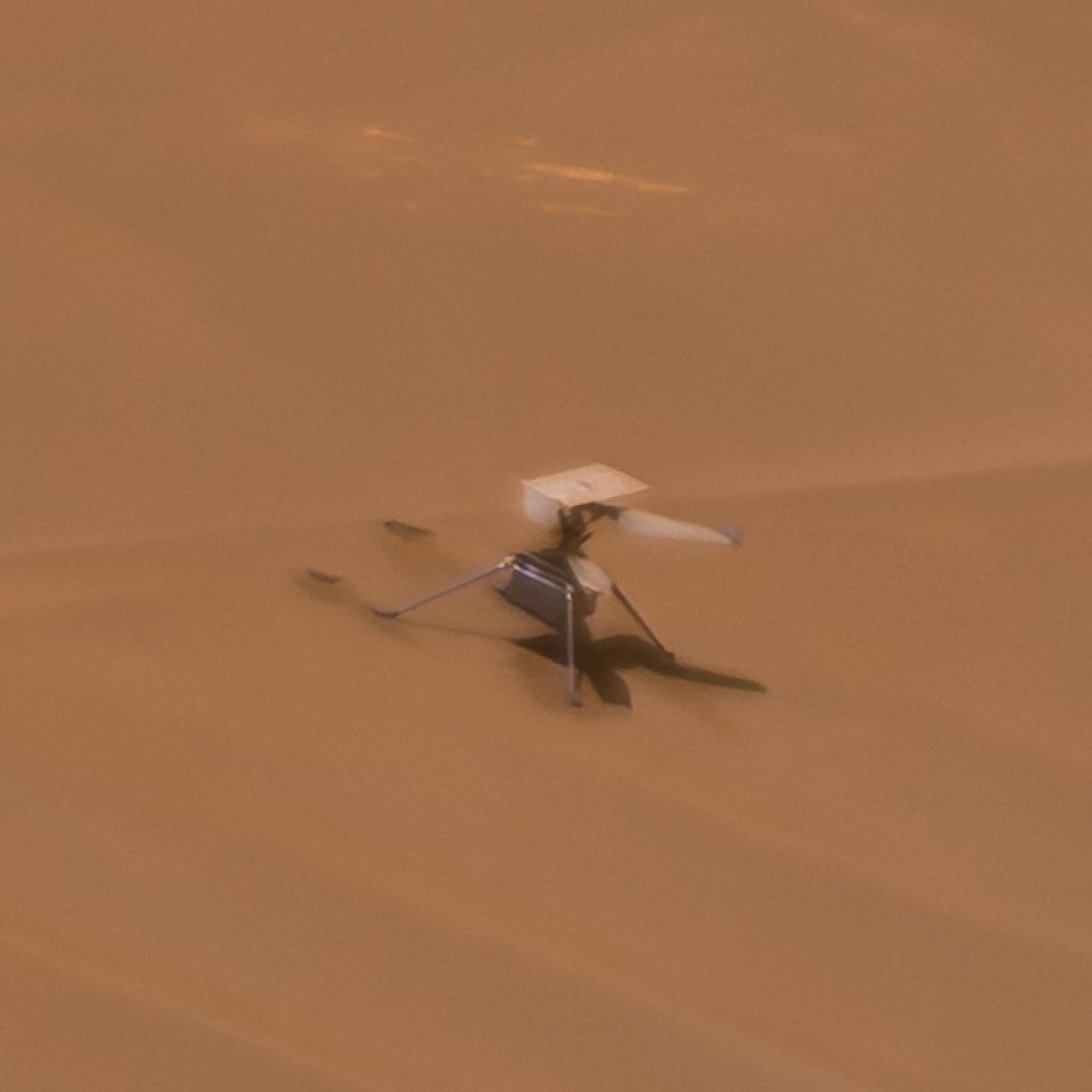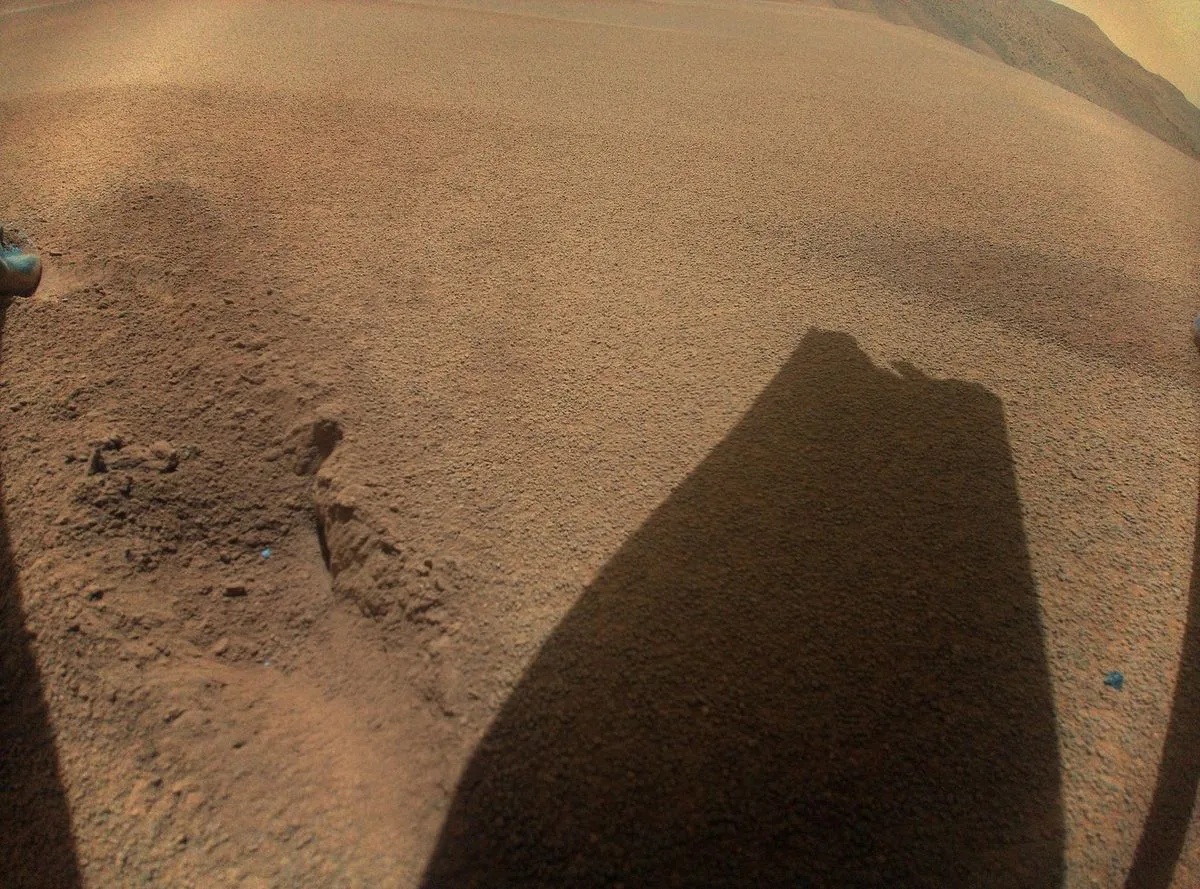Follow us on Google News (click on ☆)


A closer view of the Ingenuity helicopter and a piece of rotor blade on the ground.
Credit: NASA/JPL-Caltech
Its mission, which began in February 2021 in the Jezero Crater, initially aimed to prove the feasibility of flight in Mars' thin atmosphere through a campaign of five flights. Having easily met this challenge, Ingenuity embarked on an extended mission, exploring the Martian terrain and acting as a scout for Perseverance in its quest for signs of ancient life and sample collection.
On January 18, 2024, during its 72nd and final flight, Ingenuity experienced a difficult landing on sandy terrain without the distinctive landmarks needed for its navigation. This last flight proved fatal: one end of its blades broke, compromising the balance necessary for flight. This damage, clearly visible in the images captured by Perseverance's SuperCam on February 25, definitively ended Ingenuity's days of flight on Mars.
Ingenuity's legacy is undeniable. It not only demonstrated the possibility of powered flight on another planet but also paved the way for future aerial explorers. Ingenuity's success represents a significant advancement in our approach to space exploration, promising to broaden our understanding of distant planets from an aerial perspective.

This image shows the shadow of the damaged rotor on NASA's Mars Ingenuity helicopter, taken after its 72nd and final flight on January 18, 2024, on the Red Planet.
Credit: NASA/JPL-Caltech
The innovative approach and achievements of Ingenuity will thus serve as a benchmark for future missions, suggesting that the use of drones could revolutionize our way of exploring and understanding other worlds.